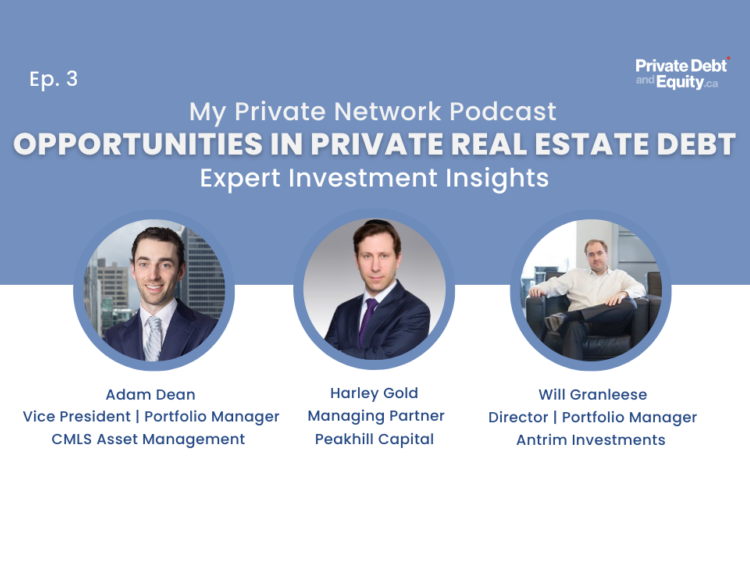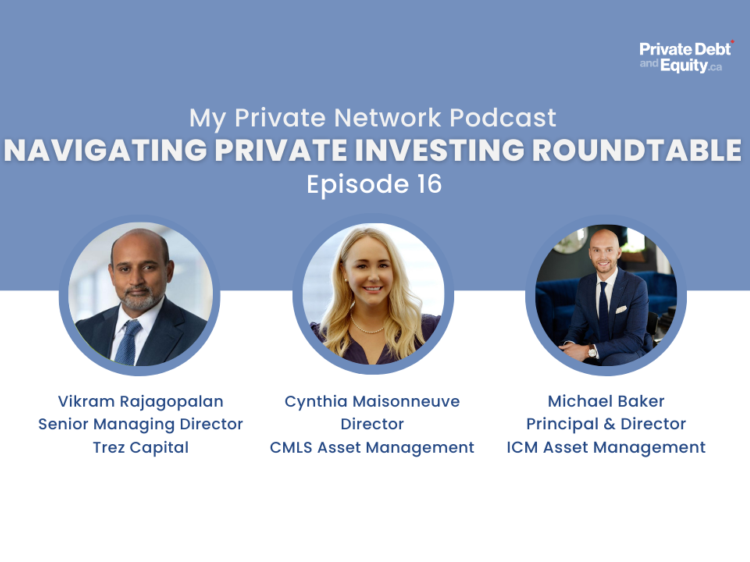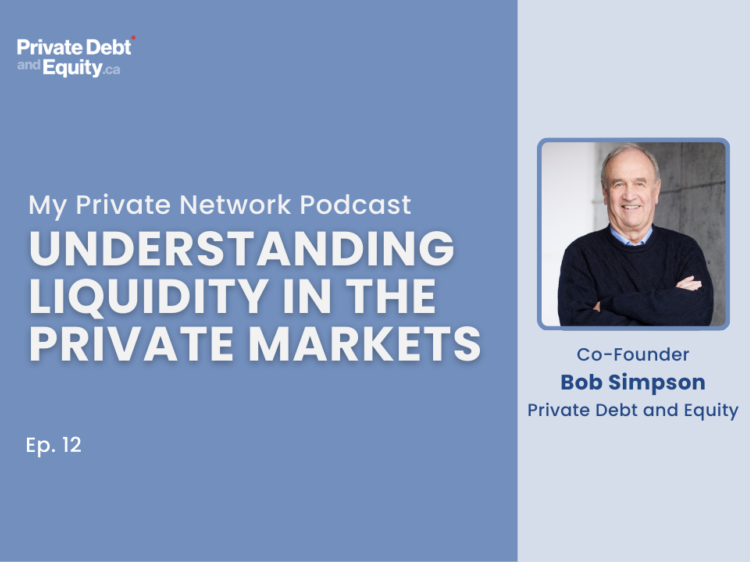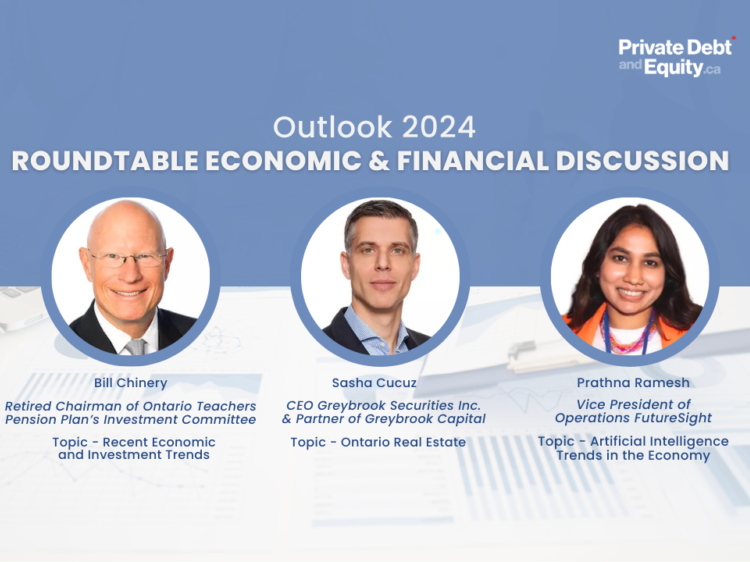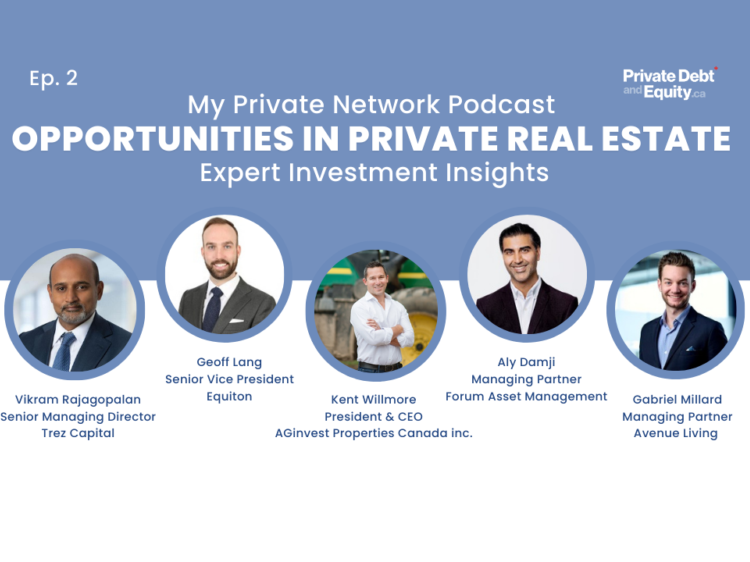Welcome to the My Private Network Podcast!
In this episode, host Bob Simpson, discusses his concerns with bond funds. He highlights the general issues investors have faced over the past 10 to 15 years, noting that there is a significant problem with their performance. He emphasizes that his critique isn't aimed at any particular bond fund but rather the category as a whole.
Through his analysis, he identifies 339 Canadian bond funds with five-year track records, which collectively manage nearly 422 billion CAD. Despite these significant assets under management, the returns have been disappointingly low.
He highlights the importance of understanding fees and their impact on returns, pointing out that paying fees to both bond managers and advisors can reduce returns to around 3%, making it crucial for investors to scrutinize their investments.
Bob also delves into private lending markets, suggesting that investors consider private lending or mortgage funds as alternatives to bond funds. He explains the benefits of diversifying into these areas to achieve higher returns after fees while managing risks. He advises investors to thoroughly understand the types of loans private lenders make and the importance of diversification.
He encourages listeners to re-evaluate their investment portfolios and consider alternative strategies. He stresses the importance of proactive financial planning and staying informed about investment options.
Today's Questions of Interest
1:00 A deep dive into liquidity.
0:58 Bonds made nearly 422 billion CAD in a 5-year track record.
1:37 3, 5 and 10 year disappointing return rate.
2:11 Bonds vs. GICs - stagger or ladder maturities?
3:08 Would you lend money to the province of Ontario, for example, for 10 years at 4.5%?
3:38 20 years ago, bond yields were in the 8 to 10 percent range.
4:11 Current bond and GIC landscape.
6:41 Should you still consider the 60/40 or 40/60 diversification in an investment portfolio?
7:01 We recommend you stop lending banks money and "be the bank" yourself.
8:25 Important investment terms you should know.
8:48 Following podcast release plan.
9:59 If you want to learn more, please get in touch with us!
10:45 Final thoughts toward your best financial health.
Transcript
Bob Simpson: Greetings listeners, I'm Bob Simpson, your host, and welcome to another episode of My Private Network podcast. Now I got to tell you, I've got a big, big problem with bond funds. Not any in particular, just bond funds in general. If you've been an investor in bond funds over the past 10 or 15 years, I think you have a problem with them too, especially if you looked at their performance.
In preparation for this podcast, I ran a screen for Canadian bond funds, mostly to see how many there are, how much is invested, and how they performed. Screens don't always give you exact results to two decimal places, let's say, but they give you a pretty good picture.
The screen that I ran identified 339 Canadian bond funds that had five year track records. Here's an absolutely shocking number. These hold almost 422 billion in assets under management. Now that's a big number, 422 billion. The average fee generated by these funds, which is even another crazy number, is 0. 72%.
To be fair, many of the biggest bond funds have much lower fees, but the 25 biggest still come in at 0. 64%. Now here's an even more shocking number, or set of numbers. The average three year total return came in at 0. 01%. That's about the same as if you left your money in a non interest bearing account at the bank.
Five years is a little better at 1. 52%, annualized in 10 year. is a whopping 2. 28%. You see, bonds are good investments when interest rates are high and are falling. But that's not the case today, as you probably know. But fees are a big concern of mine for bond funds. Bonds like GICs are not bad investments.
But bond funds don't exactly work like GICs or bonds for that matter. GICs and bonds generally mature at some point in the future. There's an old saying that with bonds that you can mature your mistakes. That is hold it and collect your three to five percent for one to three years and then reinvest.
That's why if you're managing your own bond portfolio, you should ladder or stagger maturities. So if rates go up, you reinvest at higher rates. If they go down, you still have some of your money invested at those higher rates. Now I could do a full episode on that but I have a bigger point to make here today.
With bond funds, the managers play with term, but most are governed by investment policy. And managers generally, as a rule of thumb, look at having target periods of maturity in the 7 to 10 year range. Now, most individual investors wouldn't buy a 10 year bond, but they might buy a bond fund with a 10 year term.
I always suggest to investors that you ask yourself the question, would I lend money to the province of Ontario, for example, for 10 years at 4. 5%? Most people would answer no, but then they'd go and buy a bond fund with a 10 year perpetual term. Term is different on different funds, but except for a few target date funds, there's no maturity.
In a previous life, I was fixed income strategist for Canada's largest independent wealth management firm. Now that was over 20 years ago and It was a much different time back then. Bond yields were in the 8 to 10 percent range and we built some great strategies. Monthly income strategies, laddered strategies, strip bonds where we peeled off the coupons, through to retirement yields to provide investors with great retirement income.
Owning individual bonds has almost become a forgotten strategy. Now, we've looked at the past for bond funds, but we live in the present. So, let's turn our attention to the present. A government of Canada 10 year bond today yields 3. 6 percent. A 10 year province of Ontario 10 year yields 4. 34 percent and a corporate bond like a Bell Canada 10 year yields 5. 04. So that's what a bond fund manager has to work with.
If you can buy these with zero commission, they compete with GICs. But if you're paying a bond manager 0. 5% or even more and an advisor another one to one and a half percent, your return is going to get knocked down to somewhere in the 3 percent range.
So if that's the case, why do advisors recommend bond funds or use them in structuring client portfolios? Most client portfolios are set up based on risk tolerance. As investors age, they can't usually ride through stock market swings. So they have larger portions of their portfolio in more conservative investments and bonds are the normal recipients.
That's why 422 billion is invested in bond funds, especially if you're investing through a bank branch. Bank branches love bond funds. Chances are you will never be asked to pay a 1 percent fee to hold a GIC, but bond funds for some reason have this unique mystique. They're complicated, not that really complicated, but they seem complicated to the average investor and people for some reason are willing to pay high fees to hold bond funds.
Advisors love them because they're simple to include in portfolios. Now, this is where the problem really exists. A large percentage of advisors client portfolios need to be invested in more conservative fixed income investments. Equity portfolios in general are too risk and volatile for most investors, and adding some bonds smooths out the ride.
When 60/40 or 40/60 portfolios were first developed, it worked fairly well because bonds yielded eight to ten percent, but now that rates are much lower, changes need to be made. Advisors can't make the math work for buying bonds directly, so they've turned to bond funds so that they can charge one to one and a half percent fee with minimal maintenance.
Fortunately, equity markets have been strong since 2011, but check your statements and look at the return on equities versus bonds. You will likely be disappointed when you look at your bond returns. So you're left like the small business owner who got turned down by the bank for financing, you don't know where to turn.
Our recommendation is to stop lending money to the bank and instead be the bank. Work with a private lender or a mortgage lender and get returns like what the banks are charging. It should be worth your while though. That is, the return after fees should be higher than GICs and high enough to justify the risk.
But before you do this, you also need to understand the type of loans the private lender is making. Not all private lending firms are the same. Occasionally, private lenders make bad loans. But the good ones have processes for dealing with this. This may knock your return down temporarily when they do experience some problems and there's a risk that there may be an occurrence where too many redemptions result in the fund temporarily suspending purchases and redemptions. But that's why it's important to diversify.
Now that's one of my favorite sayings is that's why we diversify when things go wrong. That's why we diversify There's a wide range of products for investors to invest in private lending markets like mortgage funds or mortgage investment corporations and private lending funds that keep portfolio returns high by investing in senior secured loans or backed by assets in the same manner that the banks lend.
Now here's some terms with which you should become familiar. Senior secured first to be repaid in the event of default asset based assets are based on the value of balance sheet assets in short term. Somewhere typically in the 12 to 18 month range. Now we've taken a short break from posting new episodes, only a couple of weeks.
And now we have developed a plan that's subject to innovation, of course, during which we will invite previous guests and new ones to express what's on their minds relating to what is happening in the investment industry. In their concepts in a variety of investment products, or just to talk about some changing trends.
We're also going to create a series of regular episodes where we have our managers discuss their performance and give us insights into their portfolio strategies. We call these due diligence calls. We also want to not just pump sunshine, but dig into problems being experienced by some of the strategies so investors can learn from real life experiences.
We've learned that our audience is made up of a wide range of viewers and listeners. As both this podcast and PD&E have been designed to introduce and educate investors, we appreciate those of you who have reached out to us over the past few months to help you redesign your strategy or invest in some unique products discussed on PD&E and this podcast.
If you want to learn more, please get in touch with us. Here's my private email, bsimpson@privatedebtandequity.ca, or call me on my direct line at 905 502 0100.
We're also educating the financial advisor community. Private debt and equity is a relatively new asset class, and it can be hard to navigate and find quality managers.
We believe that we've identified the cream of the crop. Feel free to reach out to the managers directly if you're a financial advisor or come to us, if you want to invest in some of these. If you're a private manager, please reach out to discuss how you can become part of our community. We have some new and exciting opportunities that will be soon posted on PD&E.
To close, I want to share something that I experienced yesterday. I've recently engaged with a private health clinic. I play over 100 games of lacrosse and softball and work out to stay in shape, and I wanted to make sure that I'm not taking excessive health risks. The clinic sent me to a cardiologist, and he used a number of analogies.
One that I found interesting was that most people wait for signs of symptoms before they seek help. Unfortunately, the symptom for heart condition is a heart attack and is logical to better check things out before you experience symptoms that might kill you. Investing is the same. Getting a second opinion on your portfolio or financial plan may help you avoid serious issues.
Understanding what you're getting into and communicating regularly is important. In today's episode, we looked at a potential problem. Not one that's going to subject you to major losses, but one that may stall your financial progress. We hope this will lead you to taking a closer look at your investment portfolio, looking at your statement to investigate alternative solutions.
For our viewers on YouTube and our listeners on your preferred podcast platforms, thanks for listening or watching. We appreciate all of you who have been reposting on platforms like LinkedIn. Please sign up for our newsletter so we can keep you posted. And please subscribe to our YouTube channel to stay updated on new episodes.
I'm Bob Simpson. It's been my pleasure to be your guide for
today's discussion. Remember, knowledge empowers you to make well informed
investment decisions. Until we meet again, stay focused and disciplined on your
financial journey. And if you want to, give me a call to discuss your
situation. I hope you enjoyed today!


